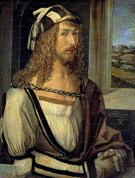Art, Art History and Design, School of

School of Art, Art History, and Design: Faculty Publications and Creative Activity
Document Type
Article
Date of this Version
2011
Abstract
The prints of Sebald Beham, and his brother Barthel, were the subject of a recent exhibition titled Gottlosen Maler or Godless Painters at the Albrecht-Dürer-Haus in Nuremberg, Germany (March 3-July 3, 2011), where this essay was included in the exhibition’s catalogue in German. The essay addresses the biography and historiography of the “godless painter” Sebald Beham, a pupil of Albrecht Dürer, who received the nickname "godless painter" because of his radical pronouncements in Reformation Nuremberg when the town was on the eve of becoming Lutheran. The essay argues that Beham should be viewed as a highly creative and productive entrepreneur and as one of the first “painters,” to use terminology of the time, who specialized in prints between 1520 and 1550. Earlier painters made prints while being more fully engaged with painting. The exhibition in Nuremberg, Die Gottlosen Maler von Nürnberg, was organized by Jürgen Müller, Professor of Art History, Technische Universität Dresden, and by Thomas Schauerte, Director of the Albrecht-Dürer-Haus. The essay will soon be published in English and revised considerably for the on-line journal, the Historians of Netherlandish Art, at: http://www.hnanews.org/hna/index.html.


Comments
Published in Die gottlosen Maler von Nürnberg: Konvention und Subversion in der Druckgrafik der Beham-Brüder, edited by Jürgen Müller & Thomas Schauerte (Nürnberg: Edition Imorde/Albrecht-Dürer-Haus, Museen der Stadt Nürnberg, 2011), pp. 13–19. Copyright © 2011 Museen der Stadt Nürnberg.